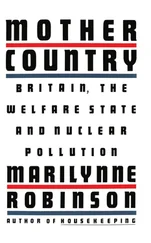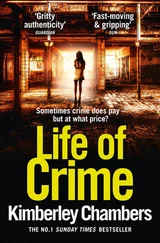The modern movement and its sub-section the new Brutalism, which believed in the ‘honesty’ of bare concrete, seemed to meet the demands of cheapness, speed and what rapidly became the lack of space as the Town and Country Planning Act preserved green belt and put pressure on inner city land. The only answer seemed to be a version of the approach adopted by the first Tesco supermarkets: pile ’em high and sell ’em quick, or in this case build ’em quick, for in theory high rise gave savings on drains, roads, services and other infrastructure. This suggestion proved to be an illusion; high rise was eventually found to cost more than traditional ways of building. Politically, however, the numbers game was all there was. In later years, Keith Joseph’s hand would go over an anguished face and he would mutter ‘disaster, disaster’ when he contemplated what he had built when housing minister in the early 1960s. ‘I was genuinely convinced I had a new answer. It was prefabrication and, Heaven help me, high blocks … the best of intentions and the worst of results.’ 38He was to recall sadly: ‘I didn’t have a philosophy. I was just a “more” man. I used to go to bed at night counting the number of houses I’d destroyed and the number of planning approvals that had been given … Just more.’39 Almost no one asked the families from the massively expanding slum clearance programme what they thought of all this. Nicholas Taylor, an assistant editor at the Architectural Review, recalled the massive arrogance still present as late as 1967 when he proposed that some evidence should be sought on what people actually wanted, to go with an issue on ‘the best of current housing’. He was scornfully dismissed by the proprietor with the words: ‘But we KNOW what should be done!’ 40
Initially, many of these housing schemes attracted awards and international recognition. But, as Rod Hackney has put it, ‘Utopia showed early signs of cracking up.’ 41Flat roofs that were fine in sunnier climes soon succumbed to British rain. Concrete became stained, crumbled, and spalled – partly the result of additives slung in to speed setting. Key joints leaked, sometimes because they had been packed with newspaper and concrete bags by builders on piece rates who were too impatient to wait for the right fittings. The result too often was ‘sodden walls and squelching floors’, 42and high fuel bills even when residents could control their own heating rather than having to rely on whole block systems which were often inefficient. Maintenance costs proved awesome. Lifts and rubbish chutes failed. As the physical environment deteriorated it was found that whole buildings and even estates could spiral down to decay and fear at alarming speed. By 1960, within two years of being built, the twin ten-storey blocks of Oak and Eldon Gardens in Birkenhead were subject to blackouts and flooding as the electrical and fire-fighting equipment was sabotaged and as children swung from balcony to balcony on the hose-reels. Two toddlers fell to their deaths and acts of arson led to repeated evacuations. 43Even when vandalism did not reach that pitch, the long corridors and dark corners of deck access flats proved terrifying. Soon, Rod Hackney noted, ‘the only people giving awards and plaudits to architects were the muggers and burglars’. 44
This perception took time to grow, and for some tower blocks and the massive slab flats proved a success: single people, the childless and even better-off families can value them when they are built to a high standard and well maintained. The mighty towers of the Barbican development in the City of London remain popular. But for too many families the public developments proved a disaster. Mothers could not see children playing many floors below amid both poorly maintained concrete and a social mix that the very planning process had set askew. Long lost by the late 1950s and early 1960s was Bevan’s romantic vision of a socially mixed village. The slum terraces that were cleared often included privately rented, council and owner-occupied housing. However, once the intention to ‘improve’ an area by demolition and replacement was announced, blight descended, sales became impossible and prices slumped. For the council, this could conveniently cut the cost of compulsory purchase which might not be finally enacted for years. But as tower and slab blocks slowly gained their awesome reputation many of the most able fled the prospect of rehousing, leaving a mix of community that was far from balanced, and which was often rehoused with scant regard for placing people near neighbours and families. Housing ghettos in the sky began to be created.
Over time these conditions were to have a deeply corrosive effect on the public perception of council housing, both for those who lived in it and those who did not. At its peak, high-rise only accounted for well under 10 per cent of local authorities’ housing stock 45– a figure which none the less meant homes for more than 1.5 million people. 46But tower blocks, and the at times even more massive slab blocks, came to dominate city skylines. Jack Straw, Peter Shore’s political adviser at the Department of the Environment in the late 1970s and twice Labour’s housing spokesman, says that these developments ‘did for public sector housing. It was an alien form of housing which became intrusive to the rest of the population. Up to the mid-1950s council blocks in the main were four or five storeys, no different in style and scale from the private blocks in north Westminster, for example. Suddenly the skyline of every large town and city was disfigured by these “welfare blocks”. The middle classes didn’t mind paying for council housing. What they did mind was being literally overshadowed by welfare housing that was destroying their skylines.’ 47
High-rise became an all-party disaster at both national and local level, but it was rent that was the chief source of party conflict over housing in the late 1950s and early 1960s. Compounding the problem of repairs was the fact that, while swathes of privately rented housing were appalling – well over a third of its households lacked hot water and one-fifth exclusive use of a lavatory 48– people had got used to low rents. Real earnings had outstripped rent rises three-fold since 1938. By 1955 official figures suggested that on average less was being spent on rent than on either drink or tobacco. 49Macmillan had lamented, ‘it is hard to get back the idea that the first thing on which the family income should be spent is living accommodation.’ 50A further complication was that council house rents, despite subsidies, were often more realistic than private ones. As a result, particularly in the more attractive housing, it was foremen and skilled workers who made up the largest section of council tenants, while the least well off often had to fall back on the worst of the private rented sector. In addition, amid full employment, the shrinking share of private renting was hampering labour mobility.
With well over a third of the houses and much more of the population renting privately, an instant free-for-all in rents was impossible when housing shortages still existed. The 1957 Rent Act, introduced by Powell and Sandys, carried through by Brooke and Reginald Bevins, produced staged decontrol. Rents at the top end of the market were deregulated over three years, affecting in the main, but not exclusively, the middle classes. Rents below that were raised, but remained controlled. As tenants moved out, however, rents could be re-set free of controls. With Labour’s official policy now municipalisation the parliamentary battle was furious, despite the Bill’s second reading in 1956 being overshadowed by the Suez crisis. Labour MPs denounced it as ‘vicious class legislation’ warning that tenants would be ‘thrown to the wolves’, left starving, or put on the streets by exploitative landlords who would do no repairs. 51Labour promised the Act’s repeal, the pledge becoming, in Keith Banting’s words, ‘a symbol of historic differences between the two parties’. 52
Читать дальше
![Nicholas Timmins The Five Giants [New Edition]: A Biography of the Welfare State обложка книги](/books/701739/nicholas-timmins-the-five-giants-new-edition-a-cover.webp)











